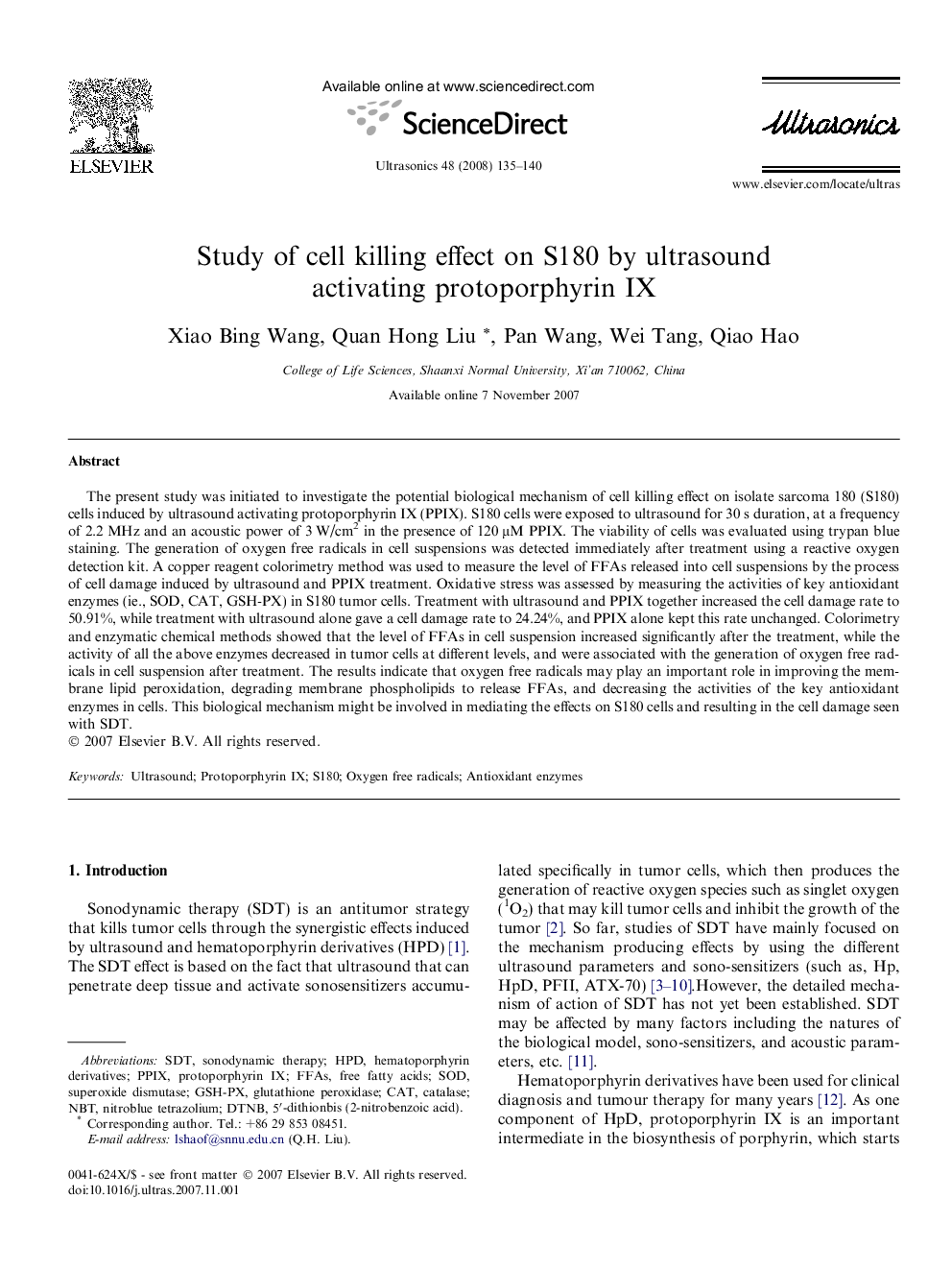| Article ID | Journal | Published Year | Pages | File Type |
|---|---|---|---|---|
| 1760038 | Ultrasonics | 2008 | 6 Pages |
The present study was initiated to investigate the potential biological mechanism of cell killing effect on isolate sarcoma 180 (S180) cells induced by ultrasound activating protoporphyrin IX (PPIX). S180 cells were exposed to ultrasound for 30 s duration, at a frequency of 2.2 MHz and an acoustic power of 3 W/cm2 in the presence of 120 μM PPIX. The viability of cells was evaluated using trypan blue staining. The generation of oxygen free radicals in cell suspensions was detected immediately after treatment using a reactive oxygen detection kit. A copper reagent colorimetry method was used to measure the level of FFAs released into cell suspensions by the process of cell damage induced by ultrasound and PPIX treatment. Oxidative stress was assessed by measuring the activities of key antioxidant enzymes (i.e., SOD, CAT, GSH-PX) in S180 tumor cells. Treatment with ultrasound and PPIX together increased the cell damage rate to 50.91%, while treatment with ultrasound alone gave a cell damage rate to 24.24%, and PPIX alone kept this rate unchanged. Colorimetry and enzymatic chemical methods showed that the level of FFAs in cell suspension increased significantly after the treatment, while the activity of all the above enzymes decreased in tumor cells at different levels, and were associated with the generation of oxygen free radicals in cell suspension after treatment. The results indicate that oxygen free radicals may play an important role in improving the membrane lipid peroxidation, degrading membrane phospholipids to release FFAs, and decreasing the activities of the key antioxidant enzymes in cells. This biological mechanism might be involved in mediating the effects on S180 cells and resulting in the cell damage seen with SDT.
